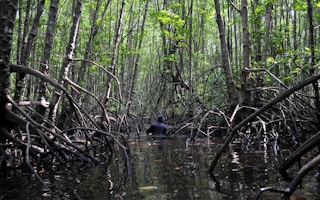When world leaders gather at the 25th United Nations Climate Change Conference (COP25) in Madrid from December 2-13, they will discuss concrete steps for meeting and increasing national emissions-reduction targets.
But equally important, COP25 offers an opportunity to elevate one of the most powerful tools we have to address climate change: nature.
Nature-based solutions (also known as natural climate solutions) leverage the world’s forests, grasslands, wetlands, and soils to reduce greenhouse-gas emissions. Healthy ecosystems absorb and store carbon on their own. And if they are protected, restored, and managed sustainably, they can provide one-third of the emissions reductions needed to meet the Paris climate agreement’s goal for 2030.
In other words, nature is offering us an opportunity that we cannot afford to miss. Reducing fossil-fuel emissions is crucial, but it will not be enough to keep global warming below 2°C, let alone 1.5°C, relative to pre-industrial levels.
To secure a livable future on this planet, we also must commit to funding nature-based solutions. All countries need to start incorporating nature-based solutions into their national climate pledges, and begin investing accordingly.
Two years ago, scientists from The Nature Conservancy and its partners published new research showcasing nature-based solutions’ potential to fight climate change. Yet natural climate solutions have continued to attract relatively little attention—and even less funding.
Fortunately, this may be starting to change. In September, nature-based solutions featured prominently at UN Climate Week in New York City. Although that event did not live up to UN Secretary-General António Guterres’s call for “clear steps to enhance nationally determined contributions by 2020,” it did offer a platform to a new generation of climate and nature advocates.
From the Youth4Nature coalition to the Swedish activist Greta Thunberg, young people were on hand to demand that today’s leaders account for the challenges they will inherit.
Climate Week also produced an announcement from a coalition led by China and New Zealand, focused on encouraging nature-based solutions in both national climate plans and the corporate sector. And the private sector itself has made new commitments, with a group of 230 international investors (representing $16.2 trillion in assets under management) calling on companies to take immediate action to address deforestation in their supply chains.
Political leaders now must maintain this momentum, by taking a closer look at what nature can do to help mitigate and build resilience to climate change. For example, one promising solution is sustainable agroforestry, in which food crops are grown alongside native trees. Expanding this practice can bolster food security and boost incomes in rural communities and simultaneously restore soil health, sequester carbon, and nurture critical wildlife.
Another nature-based solution is being pioneered in Australia, where massive bushfires are putting people and wildlife at risk—and releasing enormous amounts of greenhouse gases into the atmosphere. The Nature Conservancy is cooperating with Indigenous communities to improve grassland health, sequester carbon, and reduce the risk of catastrophic wildfires.
Drawing on traditional knowledge dating back thousands of years, Indigenous rangers set smaller, controlled burns to prevent the buildup of dry grass that contributes to larger, hotter wildfires. This program contributes to healthier grasslands while generating income for Indigenous communities through the sale of carbon credits.
“
If they are protected, restored, and managed sustainably, they can provide one-third of the emissions reductions needed to meet the Paris climate agreement’s goal for 2030.
These kinds of programs benefit people and the environment; but much more investment is urgently needed. Although natural systems play a critical role in regulating the climate, nature-based solutions still receive under 4 per cent of total public funding for climate action.
France, Sweden, South Korea, the United Kingdom, and a few other countries have pledged to increase funding for international preservation and restoration efforts, and finalising the details of these programs is now on the COP25 docket. But unless more countries make similar commitments, natural climate solutions will not achieve the necessary scale.
Worse, natural systems that could be part of the solution to climate change are facing increasingly severe threats. We have all seen the recent images of fires raging through the Amazon rainforest, which plays a major role in regulating the world’s climate.
Record-high temperatures, environmental crimes, weak oversight, ineffective firefighting, and other factors have increased the vulnerability of systems that store a disproportionate share of the planet’s carbon.
And the Amazon is just one example. The conversion and degradation of natural land and marine habitats is ongoing around the world. Such practices undermine our ability to adapt to climate effects like rising sea levels, and directly threaten our food security by wiping out species that pollinate crops, contribute to soil health, and provide habitats for fish and other marine life. Nature, climate, and human wellbeing are intimately connected; none can be addressed in isolation.
COP25 offers an opportunity for world leaders to seize on these connections in the run up to 2020, which will be a veritable “environmental super year.” In addition to finalising an international high-seas treaty and establishing a new framework for the UN Convention on Biological Diversity, governments will also revisit their climate commitments at COP26 in Glasgow, Scotland.
But any commitments that countries make at these meetings will mean little without concrete plans to back them up. We have the science, and we have the solutions. What we need now is action to leverage the power of nature.
Our shared existence on this planet depends on it.
Sally Jewell is Interim CEO of The Nature Conservancy.
Copyright: Project Syndicate, 2019.
www.project-syndicate.org











